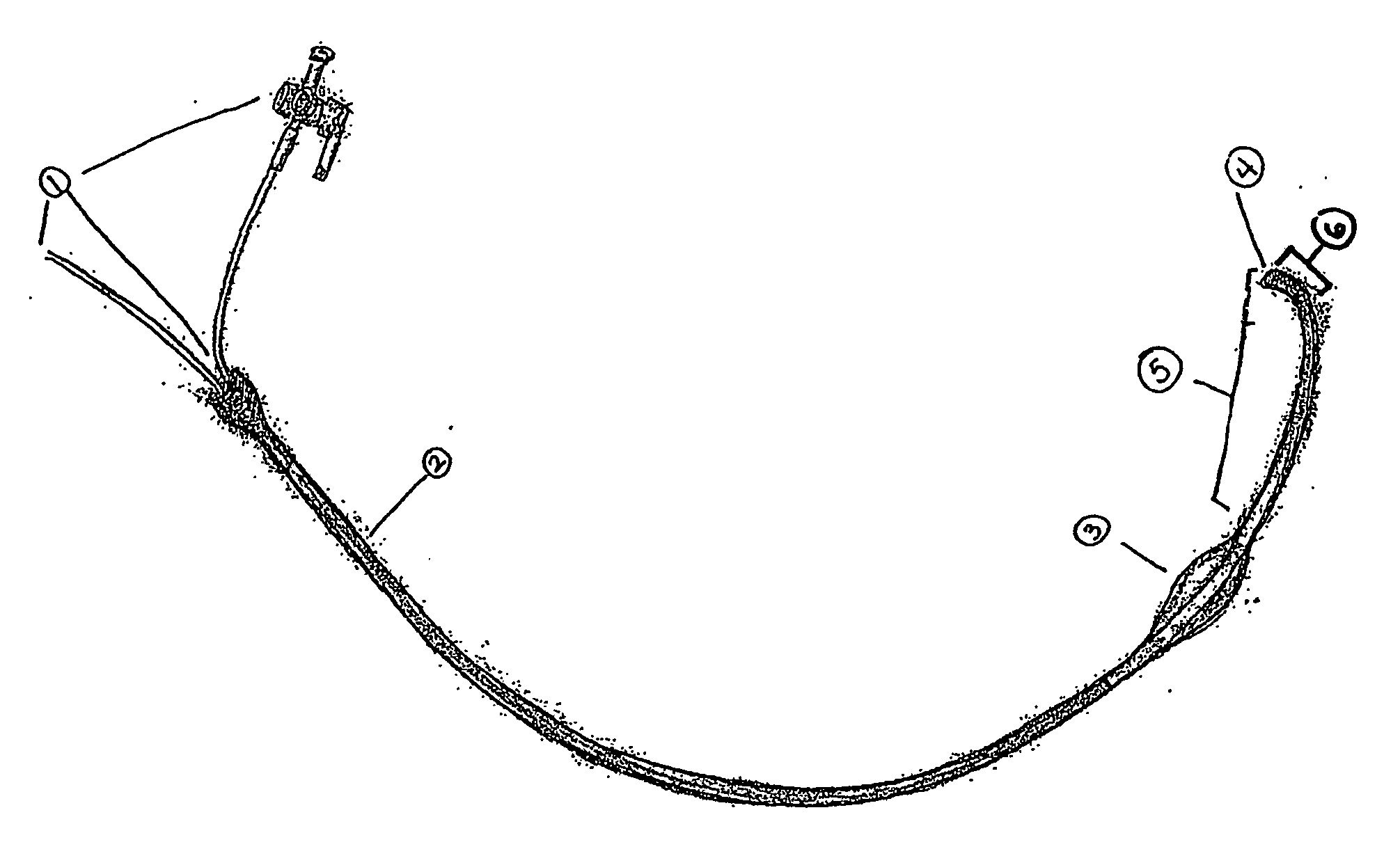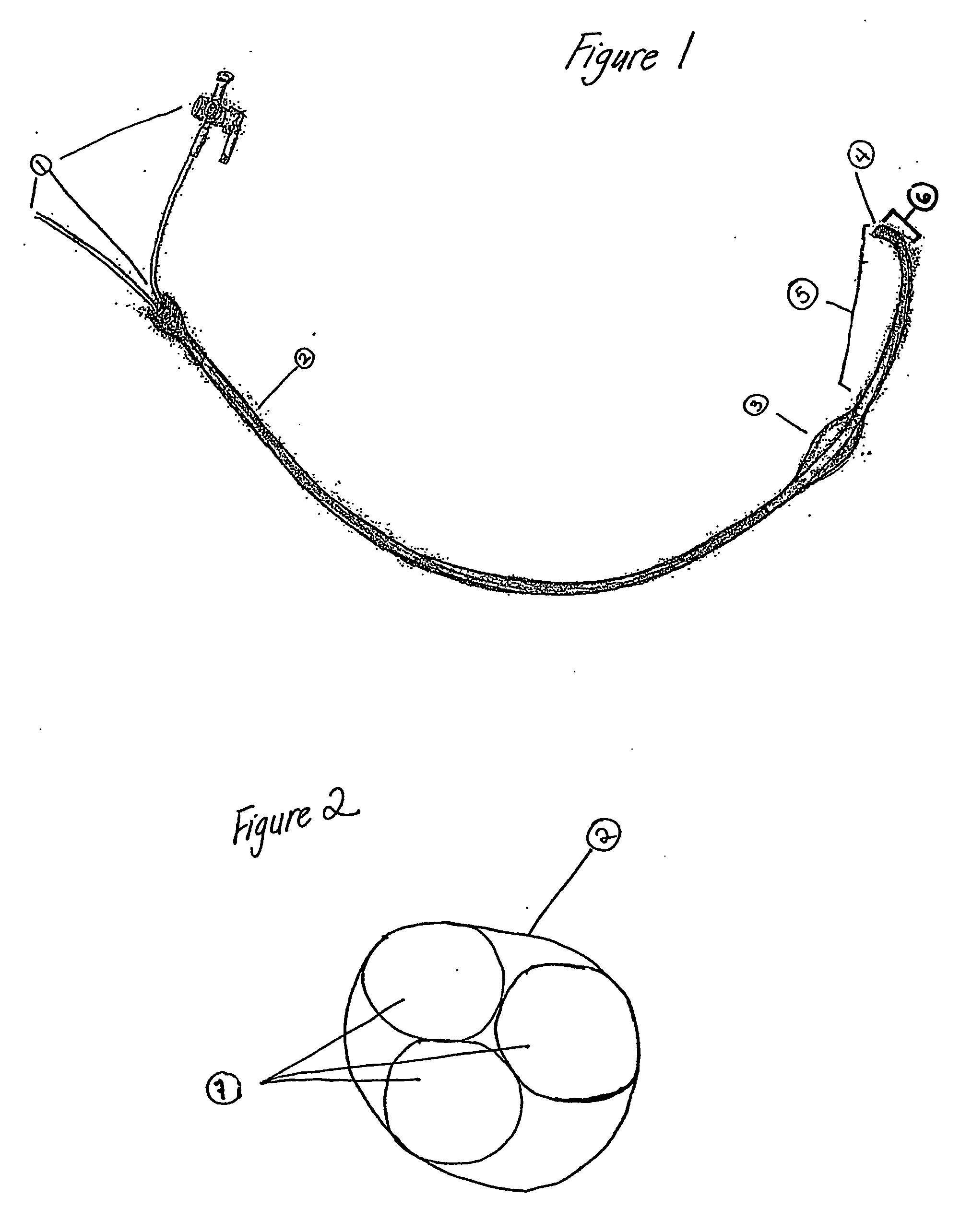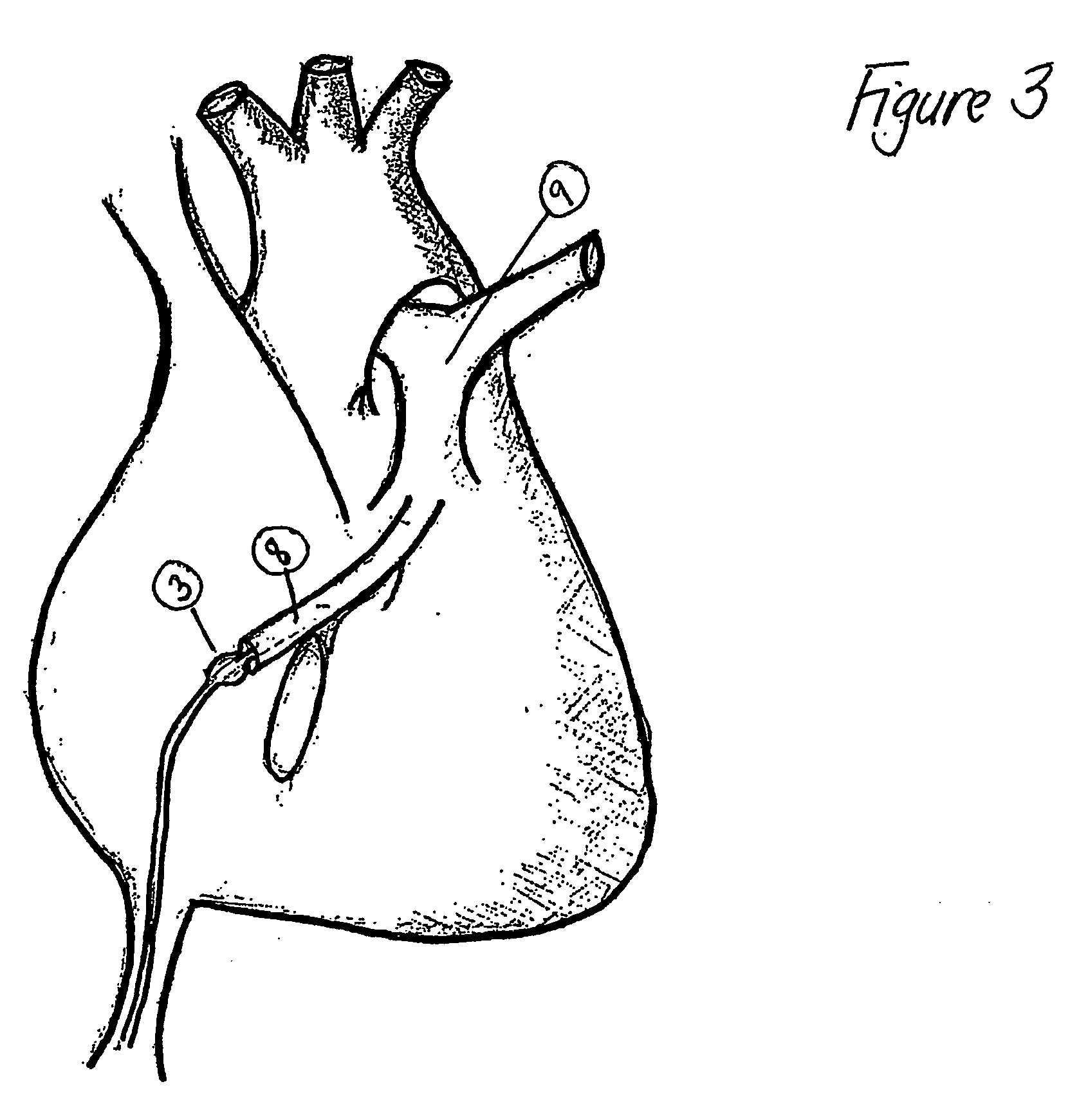Intracardiac catheter and method of use
a catheter and intracardiac technology, applied in the field of intracardiac catheters and methods, can solve the problems of time-consuming and difficult implanting of pacemakers, irregular heartbeat, and current process of implanting, and achieve the effect of occlude the blood flow in the vein
- Summary
- Abstract
- Description
- Claims
- Application Information
AI Technical Summary
Benefits of technology
Problems solved by technology
Method used
Image
Examples
Embodiment Construction
[0026] The invention catheter is for use in evaluation of coronary sinus or pulmonary vein venography to further elucidate the anatomy of the structures. A catheter of the present invention provides advantages over catheters previously used, in that the invention catheter does not use electrical activation, the catheter does not have a sheath and that the balloon, when inflated, completely occludes the vessel, and causes a retrograde flow of any injected media into the vessel, the branches and surrounding connected structures thereof.
[0027]“Venography” as used herein is a test that provides an image of the veins after a radiopaque substance, such as a radiographic dye, is injected into the subject's vein. The test is an invasive insertion of an invention catheter, in which a radiographic substance is injected into a vein in which the catheter is positioned against the blood flow of the vein. The inflated balloon of the catheter occludes the vein and causes retrograde flow into the ...
PUM
 Login to View More
Login to View More Abstract
Description
Claims
Application Information
 Login to View More
Login to View More - R&D
- Intellectual Property
- Life Sciences
- Materials
- Tech Scout
- Unparalleled Data Quality
- Higher Quality Content
- 60% Fewer Hallucinations
Browse by: Latest US Patents, China's latest patents, Technical Efficacy Thesaurus, Application Domain, Technology Topic, Popular Technical Reports.
© 2025 PatSnap. All rights reserved.Legal|Privacy policy|Modern Slavery Act Transparency Statement|Sitemap|About US| Contact US: help@patsnap.com



